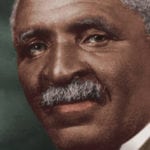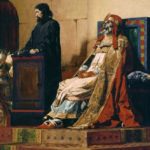 History
History  History
History  Movies and TV
Movies and TV 10 Fictional Kings Who Go from Good to Bad
 Food
Food The Fantastic Chemistry Behind Why 10 Popular Foods Taste So Good
 Technology
Technology 10 Futuristic Fungal Technologies
 History
History 10 Not-so-Spooky Events That Also Happened on October 31
 Creepy
Creepy 10 Unsettling Ghost Stories to Tell This Halloween
 Crime
Crime 10 Truly Evil People Who Used Halloween as the Perfect Cover
 Movies and TV
Movies and TV 10 Wildly Different Movie Takes on Nuclear War
 Creepy
Creepy 10 Places Where Folklore Is Alive and Well
 History
History 10 Events That Unexpectedly Changed American Life
 History
History 10 Weird Distractions from the Great Depression
 Movies and TV
Movies and TV 10 Fictional Kings Who Go from Good to Bad
 Food
Food The Fantastic Chemistry Behind Why 10 Popular Foods Taste So Good
Who's Behind Listverse?

Jamie Frater
Head Editor
Jamie founded Listverse due to an insatiable desire to share fascinating, obscure, and bizarre facts. He has been a guest speaker on numerous national radio and television stations and is a five time published author.
More About Us Technology
Technology 10 Futuristic Fungal Technologies
 History
History 10 Not-so-Spooky Events That Also Happened on October 31
 Creepy
Creepy 10 Unsettling Ghost Stories to Tell This Halloween
 Crime
Crime 10 Truly Evil People Who Used Halloween as the Perfect Cover
 Movies and TV
Movies and TV 10 Wildly Different Movie Takes on Nuclear War
 Creepy
Creepy 10 Places Where Folklore Is Alive and Well
 History
History 10 Events That Unexpectedly Changed American Life
10 Historical Figures Reputed To Be In Suspended Animation
The legend of the “sleeping hero” is a common theme in myths. Usually, a national hero takes on a Christ-like messianic role in a future end-time, reappearing to a world that had thought him dead. In the meantime, the hero is in a state of suspended animation in a secret location somewhere, waiting for the time of his awakening.
10 Saint John The Evangelist

When the apostle Peter asked Jesus what would become of his beloved disciple, John, Jesus replied, “So I will have him to remain till I come, what is it to thee?” It was explained that Jesus didn’t necessarily mean that John would live until the Second Coming, but that was exactly how some later Christians interpreted Jesus’s words.
John was indeed the longest-lived of Christ’s twelve apostles. He reportedly escaped unharmed after being thrown into a cauldron of boiling oil and was the only apostle who wasn’t martyred. Tradition holds that he wrote the Book of Revelation while imprisoned on the isle of Patmos during the reign of Emperor Domitian (AD 95–96) and wrote the Gospel at Ephesus in Asia Minor. John was believed to have died in Ephesus at the end of the first century, making him about 100 years old at the time. The bishop of Ephesus, Polycrates, spoke of his tomb in the city.
Early traditions, however, state that John wasn’t really dead. One told of how he ascended to Heaven alive like Enoch and Elijah. Others believed that he is merely sleeping in his tomb awaiting the Second Coming. St. Augustine, writing in 416, claimed that some “serious people” had seen the dust in John’s tomb scattered and blown upward by the apostle’s breathing. In the sixth century, Gregory of Tours said that this dust was used to cure the sick.
Also in Ephesus lay the “Seven Sleepers,” purportedly seven Christian soldiers who hid in a cave to escape the persecution of Emperor Decius. In the cave, all fell into a miraculous sleep, only to be roused when the cave was reopened during the reign of Theodosius II (408–450). Having thus provided evidence of the reality of bodily resurrection to the emperor, the Seven finally died.
9 Holger The Dane
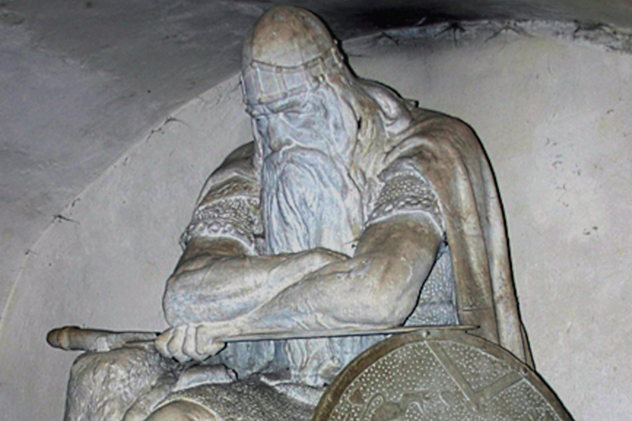
Holger Danske, aka Holger (or Ogier) the Dane, was a Viking warrior who fought with Charles Martel against the Muslims at Poitiers in AD 732. Medieval epics identify him as the son of King Gudfred, an enemy of Charlemagne. However, it’s also possible that he may have been confused with Authcharius, a follower of the emperor’s younger brother Carloman, whose territories Charlemagne invaded in 771. Holger was also portrayed as battling the Franks, who were invading Danish territory, until the Muslim threat forced Holger to ally with Charles to repel their common enemy. Holger is an obscure figure whom we know next to nothing about save from legends.
Holger eventually became Charlemagne’s vassal and developed a fearsome reputation. He towered 213 centimeters (7′) and received an enchanted sword from the fairy Morgana, which made him invincible. Yet, Holger could be merciful, such as when he forgave Charlemagne’s son for killing his own son, Baldwin, with a chessboard.
Danish folktales, made popular by Hans Christian Andersen, say that Holger never died. Instead, he sleeps in the dark cellar of Kronenburg (Kronborg) Castle at Elsinore, the setting of Shakespeare’s Hamlet. Clad in full armor, Holger sits before a table, resting his head on his arm. His beard has grown long into the table as he slumbers and dreams of Denmark. Every Christmas Eve, an angel would visit to tell Holger that all his dreams have in fact happened and that he should go on sleeping until danger threatens Denmark. When that happens, he will wake up, tear his beard from the table, and defend his country.
Holger may not actually be able to fight Denmark’s enemies, but the legend inspired the Danish resistance against the Nazis during World War II. In the 1940s, one of the partisan organizations fighting the Germans was named after Holger Danske.
8 Charlemagne
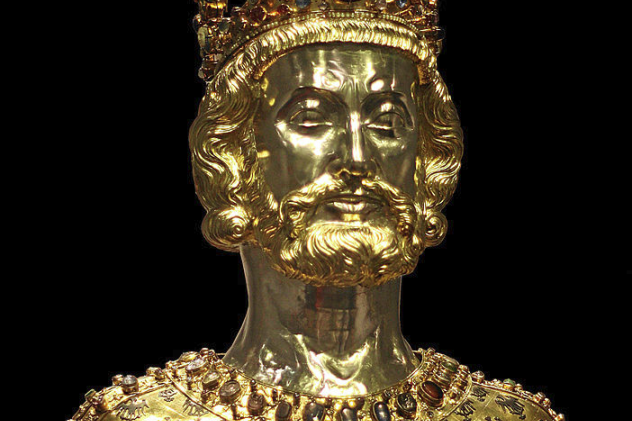
The Frankish emperor Charlemagne loomed large to people in the Dark Ages. He rebuilt much of the western Roman Empire and ushered in a modest cultural revival, pushing Europe a step out of barbarism.
Charlemagne achieved renown as the defender of Christian Europe against Muslim inroads. It was believed that he had actually led a crusade into Jerusalem in the latter half of the 11th century and that the First Crusade of 1096 retraced his route to the Holy Land on the very roads that he had built. There were medieval prophecies of a last emperor who would arise at the end of the age and recover Jerusalem from the Antichrist. In the religious fervor of the time, German emperor Henry IV was identified as having fulfilled that prophecy, but to many people, only one person was fit for the role—the formidable Charlemagne. The problem was that Charlemagne had been dead for centuries.
It became widely believed that Charlemagne was not dead but merely asleep and that he will awaken one day to complete his unfinished business of annihilating the infidels. An age of peace and prosperity will follow afterward before the end times. Exactly where the emperor slumbers has been disputed. Some point to his burial vault at Aachen. Others claim that he reposes in a deep well at a castle at Nurnberg. A German legend claimed him as being at Odenburg (Odin’s Mountain) near the town of Gudensberg. In Austria, it was Untersberg Mountain, where Charlemagne was said to sleep crowned and sceptered, surrounded by his lords. When his beard has covered the last inch of the table on which his head rests, so the legend says, the end and the last judgment will have arrived.
7 King Wenceslas Of Bohemia
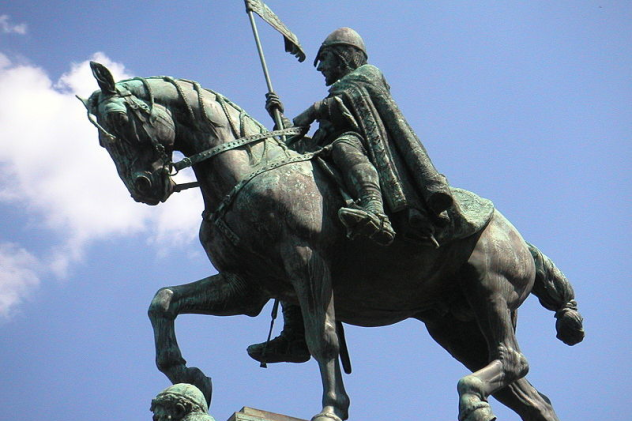
“Good King Wenceslas” of the popular Christmas carol was an actual historical figure. Wenceslas ruled over Bohemia in the 10th century. Czechs hail him as the founder of the Czech state. Wenceslas was renowned for his learning and Christian piety. It was his misfortune to be defeated in war by the Saxon king Henry I the Fowler, who forced him to pay tribute. This didn’t sit well with Weneceslas’s ambitious brother, Boleslav, who had Wenceslas assassinated and took the kingdom for himself.
The Czechs mourned the loss of their good King Wenceslas, and the martyr was made the patron saint of Bohemia. Miracles in his name were reported. A persistent legend states that Wenceslas is actually sleeping with an army of knights deep within Blanik Mountain. When the Czech nation is in grave danger, the equestrian statue of Wenceslas in Prague will stir to life and rouse the sleeping knights at Blanik. The reanimated Wenceslas will uncover a stone that holds the mystical sword of Bruncvik. With this sword, the king and his knights will ride forth to defeat the Motherland’s enemies.
The legend inspired anti-Communist demonstrations in November 1989. People flocked to the statue at Wenceslas Square, which was turned into a shrine. The demonstrations climaxed in the resignation of the Communist Party’s general secretary, whereupon the jubilant crowd cried: “The knights of Blanik have arrived!”
6 Emperor Frederick Barbarossa
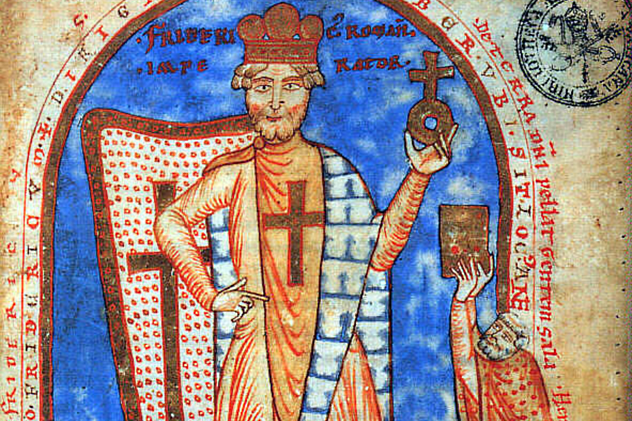
Holy Roman Emperor Frederick Barbarossa is one of the greatest medieval monarchs. He worked to assert German predominance in Western Europe, enforced imperial authority in Italy, and quarreled with the pope in the process. Frederick is a symbol of German unity. In 1189, Frederick set out on the Third Crusade to reconquer Jerusalem from Saladin. In Asia Minor, the Crusaders were blocked by the deep and torrential Saleph River. Eager to engage the Muslims on the opposite bank, Frederick and his knights plunged heedlessly into the river. Frederick and many of his knights drowned, and his army bewailed the catastrophe.
History records Frederick’s death in the river. Legend intrudes when it was said that the men suddenly beheld a vision of a monk with a crucifix. He said:
Why do you weep for your lost leader? He is not dead. He has gone back to his own country and yours—to Germany; and with him are his mailed knights. In the Kyffhauser Mountain, in the great hall of the immortals, Frederick Barbarossa rests with his chosen heroes. He will sleep there until the eagles shall cease to fly around the mountain peaks. He will rest there until the time is ripe for the doing of mighty deeds. Then the bell shall toll the hour, the trumpet shall sound, and he will ride forth with his mailed knights to conquer the world. Weep no more; but return to your fatherland to wait for the day and the hour when your warrior king shall call you!
Then, the monk vanished.
This tale was widely believed in the following centuries, but no one knew exactly where the “hall of the immortals” was located. One day, a shepherd boy searching for a stray sheep chanced upon a cave opening in a secluded glen on the side of the mountain. Exploring further, he allegedly came upon a great hall inlaid with jewels. At the center of the hall was a table where Frederick sat, his red beard overflowing to the floor. Around him slept the 1,000 knights who had followed him into the river. Awakened by the shepherd’s entrance, Frederick asked, “Do the eagles still circle above the mountain peaks?” He raised his sword and awoke his companions. A faraway voice echoed, “The eagles still circle above the mountain peaks!” Setting aside his sword, the emperor said, “Sleep on, comrades, the hour has not yet come.”
According to other legends, Frederick’s beard must grow around the circumference of the table thrice before he finally awakens. When Germany won the Franco-Prussian War in 1871, creating the German Empire, Suttgart’s Hoftheater presented the play Kaiser Rotbart Erwachen (Emperor Barbarossa Awakens), where the sleeping emperor is roused upon hearing of the victory over France, exclaiming, “Now Germany will be great again!”
5 Emperor Frederick II

After Frederick Barbarossa’s death, the prophecies of the last emperor focused on his grandson, Frederick II, who was raised in the cosmopolitan atmosphere of Sicily. His upbringing made him a man with ideas far ahead of his time, a true Renaissance man living before the Renaissance. He took an interest in scholarship, poetry, and mathematics and had intellectual discussions with Jewish and Muslim sages. He wrote a textbook on falconry. People called him stupor mundi, or “wonder of the world.”
All the while, Frederick ruled Sicily more like an Eastern despot than a Christian king. He even had his own harem. His original ideas bordered on heresy; he once supposedly dismissed Moses, Jesus, and Muhammad as deluded charlatans. Those who looked to him as the fulfillment of end-time prophecy were torn. Was Frederick a messiah or the Antichrist? The pope, with whom Frederick clashed, excommunicated the emperor for blasphemy and had no doubts that he was Lucifer incarnate: “A great Beast has come out of the sea [ . . . ] full of the names of blasphemy. [ . . . ] Behold the head and tail and body of this Beast, of this Frederick, this so-called emperor.”
Frederick’s death in 1250 created consternation among his fellow Germans, who believed in his messianic role and refused to accept his death. Rumors circulated that Frederick was merely on a pilgrimage. Another story said that the emperor was simply sleeping and would one day awaken to complete his mission to lead the Empire into a pax Romana.
Those who believed that Frederick was the Antichrist put their own twist on the legend: They claimed that Frederick was biding his time in the sea of magma within Mount Etna, where he had joined his master, Vulcan-Lucifer. In 1669, so it was told, Vulcan, in the guise of a dwarf, led a shepherd to where Frederick was sleeping. Frederick inquired of the shepherd, “Are ravens still flying around the mountain?” Told that they still were, the emperor said, “Then I must sleep for another hundred years.”
The legend of sleeping Frederick has also been exploited by a number of pretenders claiming to be the returned emperor.
4 Emperor John III Vatatzes
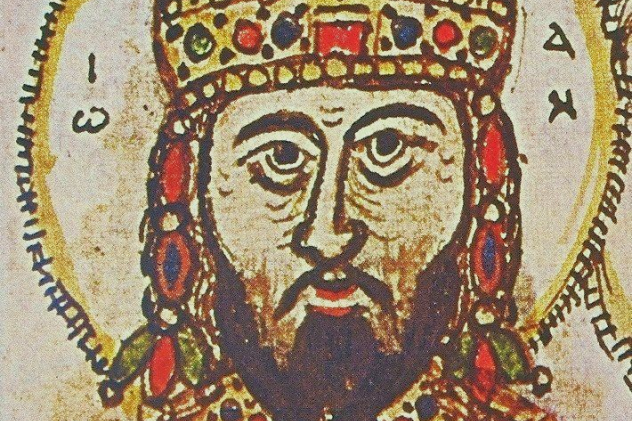
When Constantinople fell to the Crusaders in 1204, John Vatatzes escaped to Nicaea, a holdout of the Byzantine Empire. He became its emperor in 1222 and became renowned for his gentleness and humility. John III protected the poor and oppressed and once upbraided his son for spending money on a lavish wardrobe, saying, “The wealth of a king belongs to his subjects.”
It was John’s great aim to liberate Constantinople, and his military campaigns took him ever closer to his goal. The Greeks pinned all their hopes on him. But in 1254, John died having never recaptured the Byzantine capital. He was buried in the monastery of Sosandra, which he had built. John’s piety was remembered, and he was made a saint of the Greek Orthodox Church, Saint John the Merciful.
After seven years, John appeared in a vision, seeking to have his body transferred to Magnesia. When his tomb was opened, a sweet fragrance of flowers greeted the workers. John sat on his throne, displaying no sign of decomposition. Even his clothes were in perfect condition. It was as if John was merely asleep.
Legends and prophecies developed, claiming that John will one day awaken and complete his task of liberating Constantinople. When the Turks attacked Magnesia, a night watchman’s brother claimed to have seen the emperor himself, dressed in his royal robes, patrolling the defenses of the castle. When the Franks finally evacuated Constantinople, John’s remains were moved there. They were hidden in a catacomb when the Ottomans captured the city in 1453. It was said that the king’s sword will reveal itself from its sheath a few millimeters each year. When the sword has completely emerged, Constantinople will be liberated.
Greek scholar George Valavanis believes that the prophecies describe World War III, in which Russia, after having conquered Asia, will engage NATO forces in bloody battle over Istanbul. At that time, the angels will awaken John, who will annihilate the Russian fleet, stop the slaughter, and usher in his peaceful and righteous reign. The controversial Orthodox elder Ephraim of Arizona claims that John’s sword is now completely uncovered and that the emperor himself has actually been awakened. He’s wandering the streets of Istanbul incognito right now.
3 King Matthias Corvinus

He was Dracula’s best friend. Matthias Corvinus brought Hungary out of feudal chaos and into the zenith of its power in the 15th century. His alliance with Romania’s Vlad Tepes was forged due to a common enemy—the Turks. Many of the tales we have of Vlad’s cruelty actually came from Matthias. He was not only a formidable warrior, but also an intellectual. He encouraged learning and scientific inquiry. The library he built was said to rival even the Vatican’s. It was a tragedy for Hungary when everything Matthias had built, including the splendid library, didn’t survive the Ottoman onslaught after his death.
Common folktales say that Matthias had displeased God by reneging on a promise. As punishment, God had the mountains close on him and his knights, where they now lie asleep. In another variant tale, Matthias suffered terrible losses in a battle with the Austrians and withdrew from the field with his army to Mount Peca. They sought shelter in a cave, which closed over them.
One day, some travelers chanced upon the cave where Matthias slumbers. Awakened, the king asked one to look out the windows. The first window looked upon a vast field and a throng of people. The second revealed a grain field being harvested by one man, and the third opened to another crowd of people. Matthias explained that the first scene was from the present, the second from the time when Matthias will return, and the third revealed the future, when people will increase in numbers and be corrupted. The king also invited the visitors to take some leaves and feathers from a pit, which turned to gold as soon as the visitors reached home. In other stories, guests who felt that they had lingered in the cave for only a few hours would emerge to learn that 300 years had passed outside. Outside the cave grew a dry linden tree. It was said that when the tree turns green, King Matthias will finally awaken and ride out with his army.
2 Constantine XI Paleologos
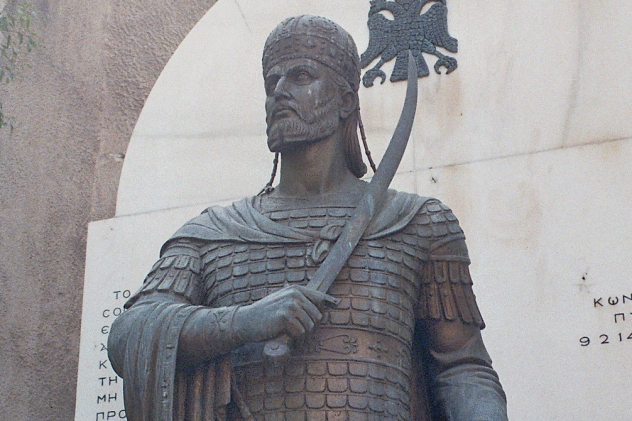
When Constantine XI ascended to the Byzantine throne in 1449, he probably had a foreboding feeling that he was going to be its last Christian emperor. The dying remnant of the Roman Empire was being mercilessly squeezed on all sides by the Ottomans, its territory practically confined to Constantinople and its immediate environs. In the spring of 1453, after 55 days of siege, Sultan Mehmed II launched a final, gigantic assault on the city walls.
Constantine urged his troops to fight to the death. Then, removing his purple cloak and Imperial insignia, he joined his men to hold back the Muslim tide. The Byzantines were hopelessly outnumbered. The emperor was last seen fighting desperately near the Gate of Saint Romanus. The Turks swarmed into the city, and a horrible slaughter ensued.
In the aftermath of the carnage, no one knew what became of Constantine. The Turks came upon a body with purple boots among the piles of the dead and assumed it to be the emperor. The body was decapitated and the head presented to Mehmed. But there was never a positive identification that the corpse was Constantine. Some say he managed to escape by ship, but that would have been virtually impossible.
The uncertain fate of Constantine gave rise to the legend that an angel snatched him away just as the Turks were closing in to kill him. The angel turned the emperor into marble and hid him in a secret chamber or cave beneath the city walls. When the time is ripe, the “Marble King” will be reanimated and reconquer Constantinople. With a sword given by the angel, he will drive the Turks away as far as the “Red Apple Tree,” a legendary reference either to the Turks’ original homeland or Muhammad’s birthplace. Aware of this prophecy, the Turks walled up the Golden Gate, through which Constantine will pass in triumph.
During the Greek Revolution of 1821, the Greeks used this legend to rally the people against the Ottomans. Constantine has always been revered as a saint and martyr by many Orthodox faithful.
1 Sir Francis Drake
To the Spaniards, Francis Drake was a pirate. To England, he was a naval hero. Drake was the first Englishman to sail around the world. As second-in-command of the fleet, he helped defeat the Spanish Armada in 1588. Throughout his life, Drake was a thorn in the Spaniards’ side, attacking Spanish outposts and plundering treasure-laden galleons. In 1596, the gallant sailor was in the midst of attacking San Juan, Puerto Rico, when he succumbed to dysentery. Drake was buried at sea in a lead coffin near Portobelo, Panama.
Drake’s reputation as England’s protector didn’t end with his death. Apparently, in his delirious last moments, Drake ordered a snare drum that had accompanied him on his voyages be returned to England. Drake promised that whenever England is in peril, one would only have to beat the drum, and he would awaken and defend his country once again. In accordance with his wishes, the drum was returned to his family home, Buckland Abbey in Plymouth, Devon.
Since then, people have claimed to hear the drum sound even without human intervention, as if to signal that Drake was keeping his promise. It was heard when Napoleon was brought as a prisoner to Plymouth and at the outbreaks of both World Wars. When the German High Seas Fleet surrendered in 1918, the crew of HMS Royal Oak reportedly heard a drum beating. A thorough search of the ship failed to pinpoint the source. The most recent phantom drumming was heard during the evacuation of Dunkirk in 1940.
After a fire at Buckland Abbey in 1938, Drake’s drum was moved to Buckfast Abbey, outside of Plymouth. When the German blitz began to pound Plymouth in 1941, people remembered the warning that if the drum was removed from its rightful home, the city would fall. The return of the drum to the city provided a boost to the morale of its citizens, and Plymouth survived the bombings.
You can still see the drum on display at Buckland Abbey, where it is cared for by the National Trust.
Larry is a freelance writer whose main interest is history.
